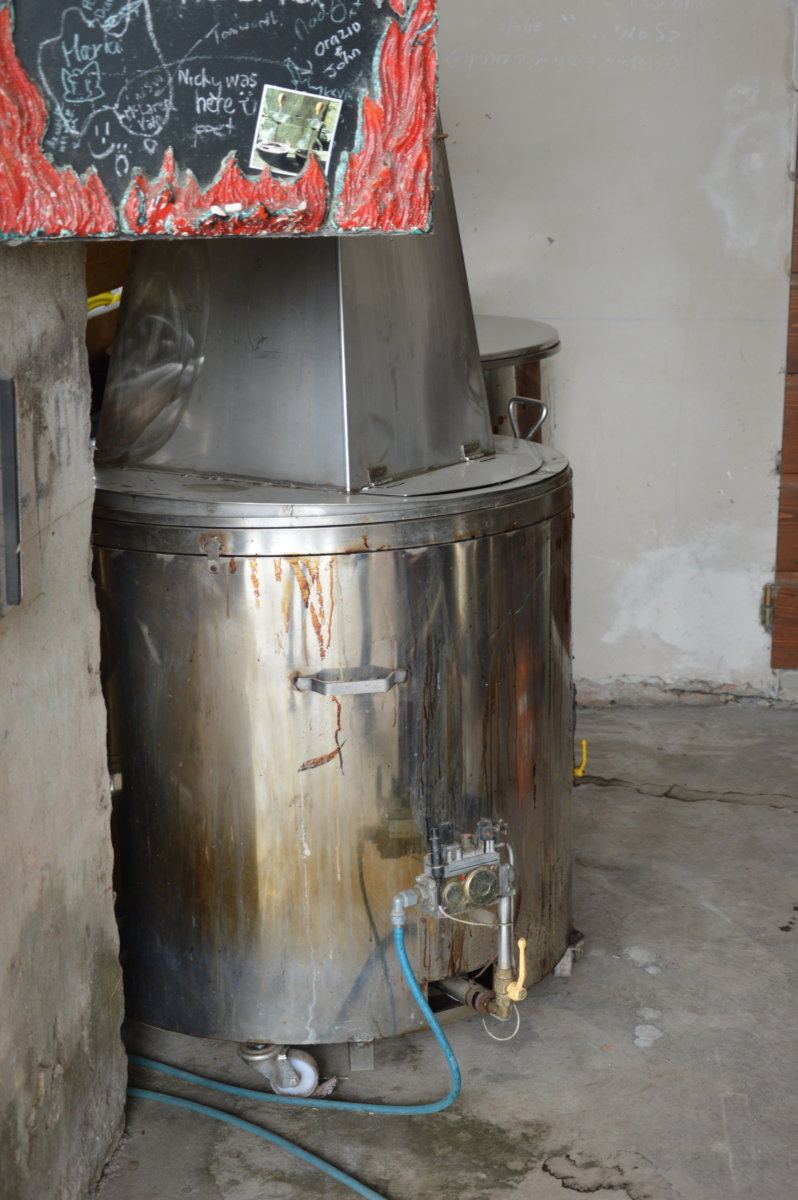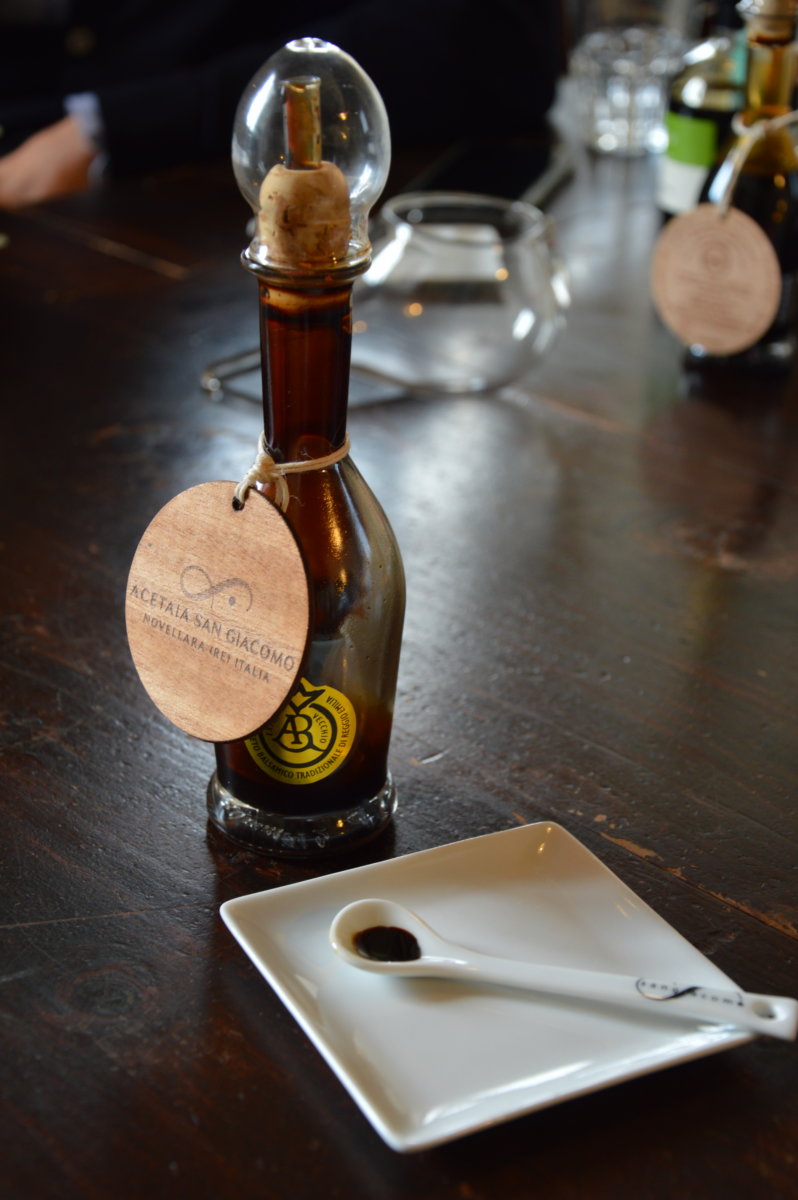To summarise all of Italy’s endless produce would take many volumes, but to get an impression of our most precious and unknown ingredients we’ve asked some of the country’s top chefs to talk to us freely about biodiversity.
Andrea Bezzecchi: The Real King of Balsamic Vinegar
By Edoardo Celadon and Phoebe Hunt

For those passionate about Italian cuisine, meeting Andrea Bezzecchi at his Balsamic Vinegar factory is similar to how meeting Michelangelo might feel for an artist. The man, the artisan, the location and the end products make Andrea one of the true custodians of the time-honored Italian heritage around Traditional Balsamic Vinegar – Aceto Balsamico. Andrea is the owner of the famous Acetaia San Giacomo, located in Novellara in the middle of the region of Emilia-Romagna. As soon as you arrive at the vinegar factory, or acetaia, you perceive that something special is about to happen. Just in time for a coffee, we immediately start the visit.

Tell us how your passion for Balsamico started?
I inherited it from my father. Aceto Balsamico was traditionally produced in very small quantities by a lot of families between the provinces of Reggio Emilia and Modena, both in the area of Emilia-Romagna. Historically, making it was a precious hobby and a sign of wealth; families would make a couple of barrels at home, and that was it. It wasn’t supposed to be consumed at the table as a condiment, but rather as a digestive or a sort of medicine. My father’s passion gradually turned into more than one hundred Balsamico barrels collected in a small Podere, a sort of country house. After he passed away in 1994, it just felt natural to take care of them.
What exactly is the real Balsamico?
To answer this I must start from the end. Most of what’s sold in supermarkets is called “Aceto Balsamico di Modena IGP”. The problem around this denomination is that it doesn’t require many rules to be followed: you can pick grapes which aren’t necessarily from the designated origin zone (Reggio Emilia and Modena); you can age it for just 60 days (which is literally nothing, when we’re talking about Balsamico); you can thicken it, you can even add caramel (to give it color); and most of all it’s often a wine vinegar blended with mosto concentrato (cheap vacuum-concentrated must).
Balsamico wasn’t supposed to be consumed at the table as a condiment, but rather as a digestive or a sort of medicine.
In reality many producers, even a few big and renowned names, actually downgrade their Balsamico in this way. The game changes when the label includes the word “Tradizionale” (Tradizionale di Modena DOP and Tradizionale di Reggio Emilia DOP). This small but important differentiation was brought about by the awakening of small producers, who wanted to clarify their methods against the big production of the “Modena IGP”.
For Aceto Balsamico Tradizionale you must use local grapes, you can work only with the cooked must (without mixing it with anything else) and you must age the vinegar for 12 to 25 years after a double fermentation, all in wood barrels. After the whole process, the rigid rules also require the tasting and the bottling to be done by an official control organisation.

Okay. Let’s put fuel on fire. Where the Balsamico was born?
Well, the first historical traces date back to 1046 when Henry III (The Holy Roman Emperor) was gifted a bottle by the Canossa family, which he described as a “precious vinegar simmering in the Canossa lands.” After that all mentions refer to the same area, which was an ancient Duchy including both Modena and Reggio Emilia.
The rest of the story is a contemporary war about whether it originated from Modena or Reggio Emilia. Personally, I don’t think this distinction is important – I say choose the real Aceto Balsamico, and don’t worry too much about whether it’s from one place or the other.
Ok, so tell us about your different products.
At Acetaia San Giacomo we produce a vast range of different organic vinegars, such as the classic Balsamico San Giacomo, for an everyday usage, the Balsamela (an apple balsamico), the Essenza, the Agro di Mosto, the Saba (cooked must reduced by 70%) and of course our Tradizionali. As well as this, we make beer and wine vinegar. The traditional aceto balsamico is divided into three categories: the Lobster Seal (over 12 years of aging), the Silver Seal (18-20 years) and the Gold Seal (over 25 years). All the products, even what’s not labeled as Tradizionale, are pure and unblended: we always use 100% cooked must made from organic local grapes.
For Aceto Balsamico Tradizionale you must use local grapes, you can work only with the cooked must and you must age the vinegar for 12 to 25 years after a double fermentation, all in wood barrels.
Could you describe to us the process of how it’s made?
I’ll describe a little about the process of how we make it, so you can see all the steps involved. We reduce the volume of the must by 30% over a direct flame, in order to start the caramelization process which will give the Balsamico its natural aromas of cooked fruits, toasted nuts, caramel without any addition. After the must is cooked, the product sits untouched for 1-2 years of alcoholic fermentation and then acetic oxidation, where bacterias will superficially create a layer on top of the liquid. In most balsamic vinegar factories, including very prestigious ones, instead of waiting months for the bacterias to work they simply add wine vinegar.
Once the product is stable, it’s ready to be aged – stored in barrels in scaling dimensions. The key to obtaining a good Balsamico is called “Rincalzo.” This is essentially the process of refilling the smallest barrel with the next barrel’s vinegar, and so on up until the biggest: without this process you would lose all the vinegar because of evaporation and you wouldn’t be able to age them for long periods of time. The vinegar is all stored at the very top of the Podere in a space which is very sensitive to the seasonal temperatures.
This whole process makes you understand how the number of years doesn’t necessarily mean quality: it’s all about rincalzo. There’s no such thing as “50, 80 or 100 year old Balsamico:” by law most of the brands don’t write “100 years” but just “100”, which doesn’t mean anything and is misleading. Nonetheless many prestigious restaurants and sellers are proud to use those products, but I don’t think they always realise the process behind it.


Could you tell us some of your most prestigious clients?
I have many but among all of them I’d say Niko Romito at Casadonna Reale, Matias Perdomo at Contraste, Rafael Cagali at Da Terra, Eugenio Boer at Bu:r, Marianna Vitale at Sud, Francesco Dolcetta at Marzapane, Giorgia Goggi at Masseria Moroseta, Paulo Airaudo at Amelia, Federico Sisti, Sarah Gruenberg at Monteverde, Riccardo Bertolino at Maison Boulud, Josiah Citrin at Mélisse, Walter Manske at République, Michael Cimarusti at Providence, Matthew Kenney at Sestina and Wolfgang Puck at Cut.
Number of years doesn’t necessarily mean quality: it’s all about rincalzo.
Future plans?
Probably we’ll experiment more with wine vinegars, honey vinegars, cider vinegars, rice vinegars and so on. We’re also doing research on new micro DIY kits to obtain real Balsamico “at home”, and our first trial was actually done at Niko’s Casadonna Reale. We do all this in order to fight bad quality vinegars. I’m also publishing my book soon. It’s going to be called “Il Balsamico senza Aceto” (Balsamic without vinegar) to expose this bad habit of mixing vinegar, must and caramel, and how wrong it is.
Could you suggest some of your favourite pairings with your Balsamico Tradizionale?
I love pairing it with a moderately aged Parmigiano Reggiano, let’s say a 30 or 48 month one, with a Silver or Gold seal Balsamico. Or why not drizzled on top of a generous plate of Tortellini alla Panna. It works also on cold cuts eaten with fresh Tigelle, a small white bread that you can fill with lard, cheese and cured meats. Young aceti balsamici (non-tradizionali) are perfect for glazing a bitter vegetable such as radicchio or endive or garnishing a fresh salad.


Where:
Acetaia San Giacomo
Strada Pennella, 1
Novellara (RE)
42017
acetaiasangiacomo.com
